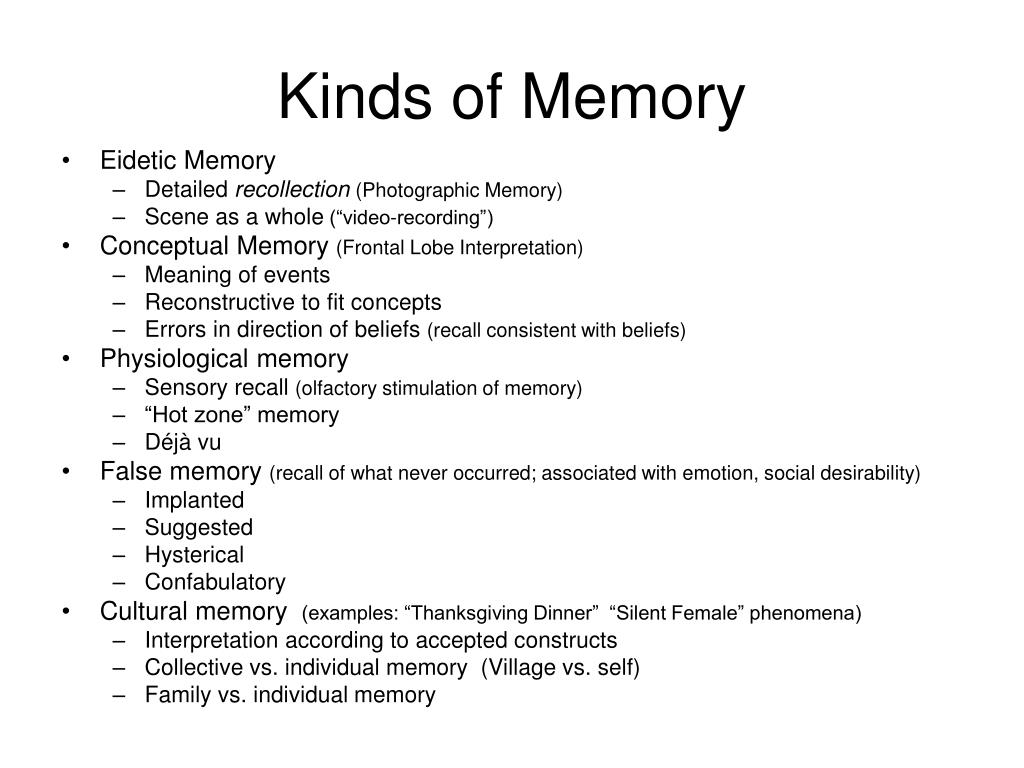

It has been hypothesized that language acquisition and verbal skills allow older children to think more abstractly and thus rely less on visual memory systems. Hudmon stated, "Children possess far more capacity for eidetic imagery than adults, suggesting that a developmental change (such as acquiring language skills) may disrupt the potential for eidetic imagery." Eidetic memory has been found in 2 to 10 percent of children aged 6 to 12. Prevalence Įidetic memory is typically found only in young children, as it is virtually nonexistent in adults. This type of ability has never been proven to exist and is considered popular myth.

It may be described as the ability to briefly look at a page of information and then recite it perfectly from memory. , just as we can describe the details of a painting immediately in front of us with near perfect accuracy." īy contrast, photographic memory may be defined as the ability to recall pages of text, numbers, or similar, in great detail, without the visualization that comes with eidetic memory.

stated, "People with eidetic memory can supposedly hold a visual image in their mind with such clarity that they can describe it perfectly or almost perfectly. Vividness and stability of the image begins to fade within minutes after the removal of the visual stimulus. Contrary to ordinary mental imagery, eidetic images are externally projected, experienced as "out there" rather than in the mind. "Eidetikers", as those who possess this ability are called, report a vivid afterimage that lingers in the visual field with their eyes appearing to scan across the image as it is described. It is not perfect, as it is subject to distortions and additions (like episodic memory), and vocalization interferes with the memory." Eidetic imagery is the ability to remember an image in so much detail, clarity, and accuracy that it is as though the image were still being perceived. However, eidetic memory is not limited to visual aspects of memory and includes auditory memories as well as various sensory aspects across a range of stimuli associated with a visual image." Author Andrew Hudmon commented: "Examples of people with a photographic-like memory are rare. Scholar Annette Kujawski Taylor stated, "In eidetic memory, a person has an almost faithful mental image snapshot or photograph of an event in their memory. The terms eidetic memory and photographic memory are commonly used interchangeably, but they are also distinguished. The word eidetic comes from the Greek word εἶδος ( pronounced, eidos) "visible form". When the concepts are distinguished, eidetic memory is reported to occur in a small number of children and generally not found in adults, while true photographic memory has never been demonstrated to exist. Although the terms eidetic memory and photographic memory are popularly used interchangeably, they are also distinguished, with eidetic memory referring to the ability to see an object for a few minutes after it is no longer present and photographic memory referring to the ability to recall pages of text or numbers, or similar, in great detail. For Sri Lankan action thriller short film, see EIDETIC (2016 film).Įidetic memory ( / aɪ ˈ d ɛ t ɪ k/ eye- DET-ik more commonly called photographic memory) is the ability to recall an image from memory with high precision for a brief period after seeing it only once, and without using a mnemonic device. For the 2011 documentary, see Photographic Memory (film). For the video game developer, see Eidetic, Inc. This article is about the precise recall of memories.


 0 kommentar(er)
0 kommentar(er)
